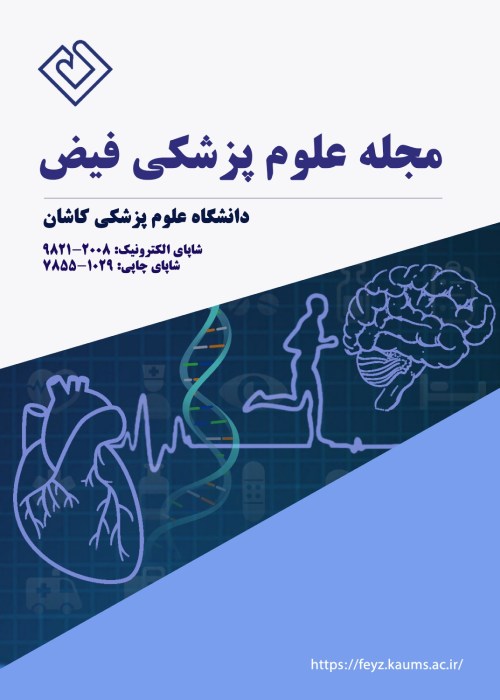Prevalence of intestinal parasitic infections among the geriatric and disabled in Golabchi Center of Kashan during 2006-2007
Author(s):
Abstract:
Background
Intestinal parasitic infection is one of the major health problems in the world, especially in developing countries. The prevalence of infection in Iran varies among different social groups. As the geriatric are high risk group, the present study was carried out in order to determine the prevalence of intestinal parasites in geriatric and�disabled residents of Kashan Golabchi Center, during 2006-2007. Materials and Methods
In this cross-sectional study a total of 297 stool samples (obtained from 243 geriatric and disabled and 54 office personnels) were randomly collected and examined by both direct, and formalin ether concentration methods. The demographic data (i.e. sex and age) and confidence interval were recorded for the study. X2 test was used for statistical analysis.Results
One hundred ninety one (78.6%) out of 243 geriatric and disabled were infected with pathogen and nonpathogenic intestinal parasites (CI=78.6 ± 5.16). The prevalence of pathogenic intestinal parasites was 42.9%. Infection rate in the male disabled was higher than that in the female (P=0.001). The prevalence of pathogenic protozoa was as follows: Blastocystis hominis, 33.3% Entamoeba histolytica/ E.dispar, 16.5 % Giardia lamblia, 4.5% and Dientamoeba fragilis, 1.6%. Also the prevalence of nonpathogenic protozoa was: Entamoeba coli, 49.4% Chilomastix mesnili, 23.5% Entamoeba hartmanni, 23.9% Endolimax nana, 11.5% and Iodamoeba butschlli, 6.6%. The prevalence of helminthes infections was as follows: Taenia, 1.6% Hymenolepis nana, 0.8% Strongyloides stercoralis, 0.4% and Enterobius vermicularis, 1.6%. Infection rate in the office personnel was 49.3%. The prevalence of Blastocystis hominis, Entamoeba coli and Enterobius vermicularis was 31.5%, 20.4% and 8.5%, respectively. Regarding the severity of infection, 42.8% were infected with one parasite, 24% with two parasites, 18.2% with three parasites and 15% with more than four parasites.Conclusion
Infection with intestinal parasites, especially pathogenic parasites, was higher than what was expected. Considering the importance of parasitic infection in geriatric and disabled people and the susceptibility of these groups to risk factors (i.e., overcrowding and immunosuppressive predisposition of these group), it seems that controlling and treating the infection is important.Language:
Persian
Published:
Feyz, Volume:12 Issue: 4, 2009
Page:
77
magiran.com/p622599
دانلود و مطالعه متن این مقاله با یکی از روشهای زیر امکان پذیر است:
اشتراک شخصی
با عضویت و پرداخت آنلاین حق اشتراک یکساله به مبلغ 1,390,000ريال میتوانید 70 عنوان مطلب دانلود کنید!
اشتراک سازمانی
به کتابخانه دانشگاه یا محل کار خود پیشنهاد کنید تا اشتراک سازمانی این پایگاه را برای دسترسی نامحدود همه کاربران به متن مطالب تهیه نمایند!
توجه!
- حق عضویت دریافتی صرف حمایت از نشریات عضو و نگهداری، تکمیل و توسعه مگیران میشود.
- پرداخت حق اشتراک و دانلود مقالات اجازه بازنشر آن در سایر رسانههای چاپی و دیجیتال را به کاربر نمیدهد.
In order to view content subscription is required
Personal subscription
Subscribe magiran.com for 70 € euros via PayPal and download 70 articles during a year.
Organization subscription
Please contact us to subscribe your university or library for unlimited access!


